Traditionalist Issues
 |
 |
 |
 |
 |
 |
 |
Open Letter to Archbishop Gerhard M�ller
Can There Be Errors in Papal Documents?
We recently received from circles close to the author the following open letter to Archbishop Gerhard M�ller of the Congregation for the Doctrine of the Faith with a request to publish it on the TIA website. We are glad to be of assistance in this matter. The Editor
1. I am not, nor have I ever been sede-vacantist even if some inattentive commentators have sought to see traits of sede-vacantism in the study on the theological possibility of a heretical Pope, which is part of my book, La Nouvelle Messe de Paul VI, Qu�en Penser? (1) Based on sound traditional dogmatic theology, regarding the Pontificates of the last decades, I do not see how it would be theologically possible to declare the See of Peter vacant at any moment. (2) If Divine Providence gives me the strength, I will soon publish a study on the theological errors of current sede-vacantist theories.
2. For every Catholic careful of his faith, the Pope is the "sweet Christ on earth," the pillar and foundation of the truth. However, great Saints, Doctors and Popes admit the possibility of the Pope falling into error and even heresy. And one cannot rule out the theological possibility that such a failing can occur in official documents of the Pope and in Councils with the Pope. (3)
The statement by Archbishop M�ller
3. Last November 29, L�Osservatore Romano published a text by Most Reverend Archbishop Gerhard Ludwig M�ller, Prefect of the Congregation for the Doctrine of the Faith, the former Holy Office, titled �An Image of the Church of Jesus Christ that Embraces the Whole World.� Commenting on the December 22 speech to the Roman Curia in which Benedict XVI declared that Vatican II should be the object of a �hermeneutics of reform in continuity� facing a �hermeneutics of discontinuity and rupture,� Archbishop M�ller writes that what Pope Benedict XVI has termed �the hermeneutics of reform, of renewal in continuity� is the �only possible interpretation according to the principles of Catholic theology.�
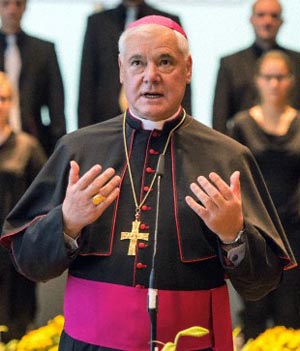
Archbishop Mueller affirms traditionalists in genere hold a heretical position
4. Here I will not delve into certain points of this statement such as the issue of the �hermeneutics of reform in continuity� and the �hermeneutics of discontinuity and rupture,� Nor will I analyze the phrase in which His Excellency states that progressivists and traditionalists �share a common rejection of the Council.� Nor will I comment on the title of Archbishop M�ller�s text with the ambiguous and suspect expression ,�a Church of Jesus Christ that embraces the whole world.�
Nor will I speak about the fact that finally, after many decades, a condemnation of Progressivism came, which would be promising if it only had canonical force, were doctrinally enforced in Catholic life and the teaching in seminaries, and used as a criterion for ecclesiastical promotions, etc. It would be promising and an omen of better times because then the Prefect of the Congregation for the Doctrine of the Faith would be seriously proscribing Progressivism as heretical.
The extreme gravity of this condemnation
6. Indeed, the force of this condemnation should not be underrated. Logic imposes itself: anyone who heretically interprets an Ecumenical Council is a heretic. No one can claim that his statement is irrelevant because it is not a formally canonical condemnation. It is a serious thing for the Prefect of the Congregation for the Doctrine of the Faith to have said what he said. It is a serious matter that in his rehearsal of launching a first anathema against traditionalists, he hid behind the screen of doctor privatus [speaking as private doctor].
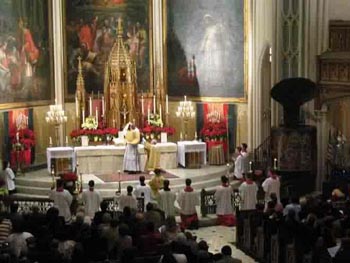
all these traditionalists condemned as heretics, as M�ller suggests?
7. As St. Thomas Aquinas teaches, �heresy is essentially opposed to the Faith,� (4) and �heretics are those who profess the Faith of Christ but corrupt its dogmas.� (5) �Faith is first among the virtues�; (6) �for it is a much graver matter to corrupt the Faith which quickens the soul, than to forge money which supports temporal life.� (7)
8. The Scope of the Condemnation � The modern world has lost both the notions of Faith and of the gravity of heresy. Integrity of Faith is the starting point of Catholic life. A formal heretic does not have the theological virtue of faith and as such is excluded from the Church. Archbishop M�ller�s condemnation was made with generic, terse words. Given the importance of this matter, those affected by his anathema are entitled to ask him to make explicit its scope and theological, canonical and practical consequences � even if only in sede theoretica [theoretically speaking], in the case that it were valid.
Vatican II and the infallibility of the Church
11. The Extraordinary Magisterium? According to the Vatican Council I, the Pope is infallible when, in teaching the Universal Church in revealed matters of dogma or morals, he solemnly defines a given truth as one that must be believed by the faithful. According to the doctrine established by theologians, these conditions of papal infallibility apply, mutatis mutandis [duly adapted], to Ecumenical Councils, whose infallible definitions impose, therefore, on the faithful the strict obligation of professing the proposed doctrines.
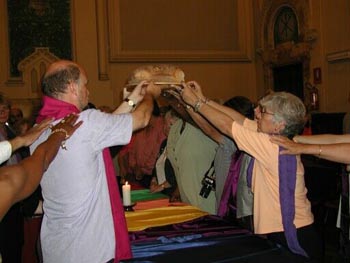
Fruit of Vatican II: Parishioners concelebrate with their priest in Gottesdiens
12. The Infallible Ordinary Magisterium? According to Vatican I, the �ordinary and universal Magisterium� is also infallible. In order for it to be so, in her daily teaching the Church must impose a truth as having to be believed not only throughout the world but also with continuity in time so that it becomes patent to every one of the faithful that that truth was revealed and must be professed under pain of abandoning the Faith.
In this context, the concept of �universal� is not always interpreted correctly, as some understand it merely as indicating universality in space, that is, in the whole world. According to this view, all the teachings of Vatican II are infallible because they were solemnly approved by the Pope with the moral unanimity of the Bishops. In reality, individual magisterial acts by the Pope and Council as they occurred in Vatican II cannot define dogmas of the ordinary Magisterium because they lack continuity in time and the consequent binding character that would impose them absolutely on the consciences of the faithful.
13. Vatican II�s �Innovations of a Doctrinal Nature� � On December 2, 2011, Msgr. Fernando Oc�riz, Vicar-General of Opus Dei and professor of theology, published in L�Osservatore Romano an article titled, �On Adhesion to the Second Vatican Council.� In it one reads: �A number of innovations of a doctrinal nature are to be found in the documents of the Second Vatican Council ... Some of them were and still are the object of controversy with regard to their continuity with earlier magisterial teaching or their compatibility with Tradition. ...�
Msgr. Oc�riz goes on to recognize the �difficulties in understanding the continuity of certain conciliar teachings with the Tradition. ... There remains room for legitimate theological freedom to explain in one way or in another how certain formulations in the conciliar texts do not contradict Tradition and, therefore, to explain the correct meaning of some expressions contained in those passages.�
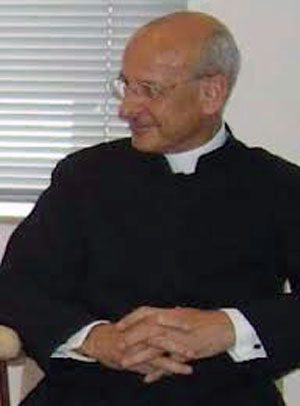
Msgr. Ocariz questions the continuity of some documents of Vatican II
�The problem is not to know whether the absolute and all-encompassing assistance of the Holy Spirit would be possible in principle. Of course it would. In fact, however, Our Lord did not want to endow St. Peter, the College of Bishops with the Pope, or ultimately the Church, with assistance in such absolute terms. God's ways are not always our own. The bark of Peter is subject to storms.
�In short, traditional theology affirms that, according to Revelation, assistance from the Holy Spirit was not promised and therefore not guaranteed in all cases and circumstances in such an unrestricted way. The assistance guaranteed by Our Lord covers all extraordinary definitions without exception, both papal and conciliar. But monumental theological works, especially in the silver age of Scholasticism, show that it is possible for errors and even heresies to exist in papal and conciliar pronouncements not guaranteed by infallibility.� This is what I am now reaffirming. ...
Three respectful requests to Archbishop M�ller
14. A Catholic Profession of Faith � In view of the above text by the Prefect of the Congregation for the Doctrine of the Faith, I hereby request that he accept the profession of faith I now make in everything that Holy Church authentically teaches; in her dogmas, both the extraordinary papal and conciliar Magisterium and the dogmas of the ordinary and universal Magisterium. I also affirm my entire acceptance of all the other truths of Catholic doctrine, each with the theological qualification that traditional doctors attribute to it. And I reject the accusation that I have fallen into heresy through an attachment to Tradition as theologically unfounded and factious.
15. The Meaning and Scope of the Condemnation � Given the need for precision in a statement with such a theological scope as the condemnation, though strictly doctrinal, of a current of thought highly significant in the whole Catholic world, I ask Archbishop M�ller to further clarify the theoretical and practical scope of his anathema with regard to the observations in item 8 above. On making this request, I have in view also the salvation of simple souls who faithfully uphold the dogmas of transubstantiation and the Virginity of Mary before, during and after partition, and all other Catholics who lack access to subtle theological distinctions and whose faith could be shaken by the news that the Prefect of the former Holy Office has declared that traditionalists, without distinction, are heretics.
16. On the Possibility of Error In Documents of the Magisterium � As a faithful Catholic keenly aware of the authority of the Vatican Dicasteries and also as an author of writings with considerable readership for which I feel responsible before Our Lord, I believe I am entitled to make a filial request to the Prefect of the Congregation for the Doctrine of the Faith: that he state in a formal, clear and specific way whether the thesis sustained in my mentioned works is false; I ask the same for the thesis I now sustain that it is theologically possible for errors and even heresies to exist in papal and conciliar documents that do not fulfill the conditions necessary for infallibility.
17. On this Holy Christmas eve, invoking the Divine Infant, His Most Holy Mother and St. Joseph, Patron of the Universal Church, I publicly make these considerations and requests in legitimate self-defense, cum moderamine inculpatae tutelae [a moderate and blameless defense], given that the aggression sustained was public.
S�o Paulo, December 30, 2012
- Arnaldo Xavier da Silveira, La Nouvelle Messe de Paul VI, Qu�en Penser, Chir�-en-Montreuil, France,: La Pens�e Fran�aise, 1975;
- See Paul Laymann, SJ +1635, �Th. Mor.�, Venice, 1700, pp. 145-146; and Pietro Ballerini, �De Pot. Eccl.�, Rome, 1850, pp. 104-105;
- See La Nouvelle Messe, Part II, chaps. IX and X, and my earlier works cited therein;
- S.Th., II-II, 39, 1, ad 3;
- S.Th., II-II, 11, 2, c;
- S.Th., II-II, q. 4, a.7, c;
- S.Th., II-II, q.11, a. 3, c.
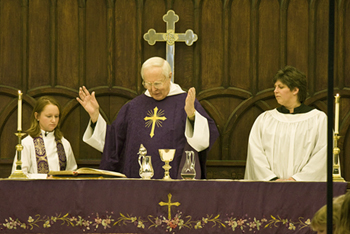
text text text
My comment that the Catholic grammar-school curriculum on sex would make Casanova blush is not intended as wit or sarcasm. It is a cruel fact, because for young children in the classroom, its content is essentially pornographic, firing out facts of life these young souls are not ready for.
It begins in the first grade, with physical descriptions of why boys are different from girls. Explicit definitions focus on terminology that one would find in a pre-med course at a university. When Mrs. Marilyn Angle, a registered nurse, was asked to view some of the sex education films, she found that the exposure to every detail was so stark and so crude that she exclaimed, �We were not even exposed to this kind of thing in nurses' training.� (1) A psychiatrist, Rhoda Lorand, made this statement, "I think sex education is creating more perverts than were ever created before."(2) These comments, let the reader note, were made in 1969, when the sex-ed curriculum was more �timid.�
Now, we fast forward to our time. In his classic work criticizing the sex-ed curriculum James Demers tells us the physical descriptions of why boys are different from girls still starts in grade one. By grade four, in the classroom �discussions� with students, the teacher describes, �in the most minuscular, biological detail, exactly what happens during the conjugal act. There are no generalities, only microscopic graphics of the whole constellation of phallus." (3)
In grade five, the teaching extends to the most precise descriptions possible of the forces of reproduction, leaving nothing to the imagination with regard to the primal-organic bodily movements that causes sexual intimacies in marriage. By grade six, the teacher elaborately depicts the graphic process of birth. One can only agree with one writer who said this about such a criminal assault on the innocence of children, �When sex is discussed in the classroom, no child can escape." (4)
Bishops, the pioneers of sex-ed
In Children in Winter, Demers points his finger at the Bishops for shirking their responsibility to protect the young: �How then, Lord, to dredge up even an iota of respect for bishops who turn over to degenerate sexologists those innocents whose very souls Thou has placed in their trust? How then, Lord, do we comprehend right action when schismatic bishops throw the dice that will rend asunder Thy seamless garment? Where, Lord, do we go for a shepherd when those Thou hast appointed fence us out of Thy fields by an inversion of the meaning of collegiality? Thy glens and glades have been turned into pictures of Asmodeus (demon of lust). Where do we look, Lord?" (5)
No wonder that from 2004 to 2012, pedophile sex-abuse by priests in the U.S. ran up a bill of $3 billion, with eight Catholic Dioceses declaring bankruptcy due to these sex-abuse cases. (6) How could the teaching of sex-ed, which crammed into the innocent souls of children concepts they were not ready for, also not defile the souls of the priests, religious and Hierarchy who presented these graphic demonstrations? No wonder that Our Lady weeps.

The end of innocence: Girls giggle at illustrations in the Growing in Love program
It took the Second Vatican Council to waive the Catholic morality of centuries. But it took the Bishops of North America to fashion a focus on sex that implicitly drilled into children that �outside of sex there is no fulfillment." (7) There are two evil entities that created and nurtured the war against the innocents in North America: The American Conference of Catholic Bishops and the Canadian Council of Catholic Bishops.
As Randy Engels outlines in her well-documented work on the origins of sex education in Catholic Schools, in the U.S. it was Bishop James T. McHugh of New Jersey who drafted the first sex education program with explicit sexual descriptions and terminology for Catholic grammar schools. In 1968 the U.S. Catholic Bishops reversed their traditional prohibition against sex education in Catholic schools and adopted the McHugh guidelines. Overnight, sexual education became �a grave obligation arising from new circumstances of modern culture and communications.� (8)
A religious named Fr. Leo LaFreniere, O.M.I. (who wore a giant polka-dot bow tie to pose for photographs) took the U.S. version of sex-ed to Canada. The LaFreniere philosophy dominated teacher education for the Catholic school system for decades. Fundamental to that philosophy was separating sex instruction from Catholics' morals and denying the reality of the latency period, a time of innocence when the child�s interest in sex is latent and dormant. In fact, to LaFreniere and his colleagues, the latency period was a red herring, a Freudian notion to be exploded. For the child between the ages of six and twelve, LaFreniere provided full and sexually explicit instructions. (9)
- footnote 1
- footnote 2
- footnote 3
- footnote 4
- footnote 5
Posted October 8, 2013
______________________
______________________








